Viewpoints and the Hidden Perspective
When looking at a painting, a statue, a sculpture or perhaps a tapestry, what do you think? How do you view the work? Where do you stand? Or sit? Does your position affect how you receive the work? How many perspectives are there to a creative piece?
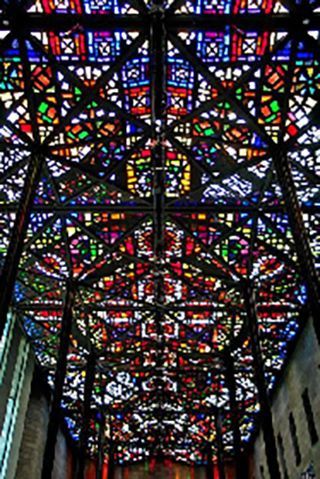
The image above is of the largest stained glass ceiling in the world and it is in Melbourne, at The National Gallery of Victoria, (NGV), created in 1968 by Australian artist Leonard French (1928-2017). You can try to take in the magnificence of the work by standing and craning your neck, but most of us like to view the ceiling and the various symbols of turtles and birds which gather around a giant sun by lying down on the floor.
In fact, here in Melbourne it is almost a rite of passage to go to the NGV with a friend and suggest a few creative moments lying on the floor in The Great Hall admiring one of our best pieces of art.

I’m sure you’re wondering where all of this is heading. I'm not suggesting you start lying down on the floors of the world’s great galleries. (Actually why not?!)
If there was room and The Vatican would allow it, you would gain a great deal more from lying on the floor to gaze at the ceiling in the Sistine Chapel, which was painted by Michelangelo between 1508 and 1512.
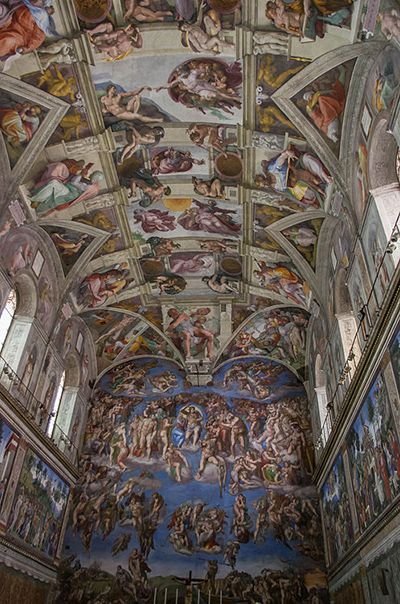
If you were allowed to lie on the floor and gaze up at Michelangelo's masterpiece you might see something quite unusual which offers a different perspective on this work.
The Separation of Light from Darkness (below) is, from the perspective of the Genesis chronology, the first of nine central panels that run along the center of Michelangelo's Sistine Chapel ceiling and which depict scenes from the Book of Genesis. Michelangelo probably completed this panel in the summer of 1512, the last year of the Sistine ceiling project.3 Below can be seen the four ignudi and two shields or medallions which surround the image of God as perceived by Michelangelo.
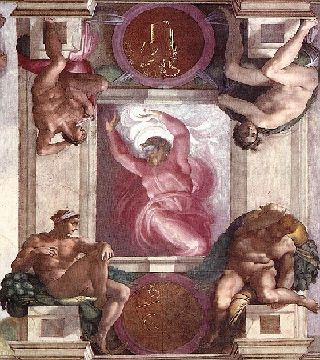
We are going to zoom in closer to the image of God and study in a little more detail the way that Michelangelo has painted the anatomical details of the neck.
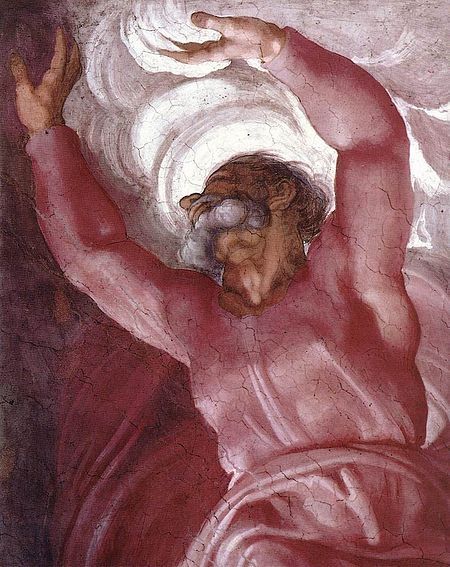

Several authors have proposed that Michelangelo concealed anatomical images in this fresco and that these anatomical images account for its unusual features.
Ian Suk, a medical illustrator, and Rafael Tamargo, a neurosurgeon, both from the Johns Hopkins University School of Medicine, suggested that Michelangelo concealed three neuroanatomical images in the Separation of Light from Darkness.
Suk and Tamargo showed that the anatomical details in God's neck in Separation of Light from Darkness are unlike those of other necks painted by Michelangelo in the Sistine Chapel or of other necks painted by Michelangelo's contemporaries, such as Leonardo da Vinci and Raffaello Sanzio (Raphael).3
Suk and Tamargo suggested that Michelangelo concealed a sophisticated image of the undersurface of the brainstem in God's neck and that by following Michelangelo's lines in God's neck, one can outline an anatomically correct image of the brainstem, cerebellum, temporal lobes, and optic chiasm. 3

Why would Michelangelo do this? What was his perspective on the painting he was commissioned to produce? A growing body of theorists believe it was the artist’s attempt at a clandestine attack on the church’s contempt for science at the time.
If you would like to read more about this fascinating topic click here.
Wikipedia also has an excellent article on the same topic, so if you'e interested, please click here.
What I'm really saying is that when you look at a work of art,you will gain more from the viewing if you appreciate the multiple layers that constitute the image. You will gain more if you think about the different perspectives embedded in, for example, a painting. This is also true of a sculpture, statue, tapestry. Consider carefully what you can see from your perspective as the viewer and don't forget to change the angle of your viewing.
Look at this amazing painting Rushing Mist by Robert Bissell.
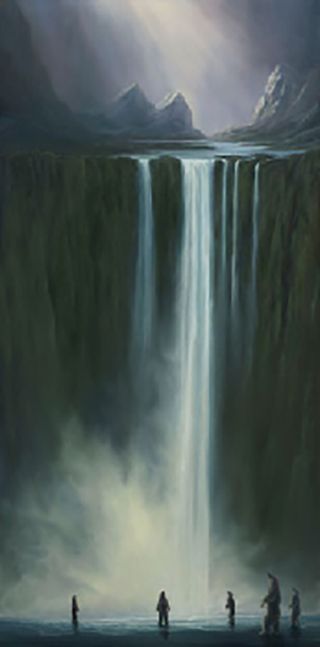
Robert Bissell’s painting Rushing Mist contains multiple perspectives where the viewer has an extra viewpoint to that seen by the bears at the bottom of the waterfall. The viewer can see above the waterfall and that extra knowledge puts the viewer in a position of advantage.
What does this do to your feelings about the image? What do you feel? Do you want to tell the bears about the scene above them? Do you feel sorry that they can’t seen what you can see? Do you feel superior because you can see more?
Now we move onto a couple of L.S.Lowry's paintings. I'm sorry the quality isn't better but I am sure you can see that there is a gathering of people to the right of centre.
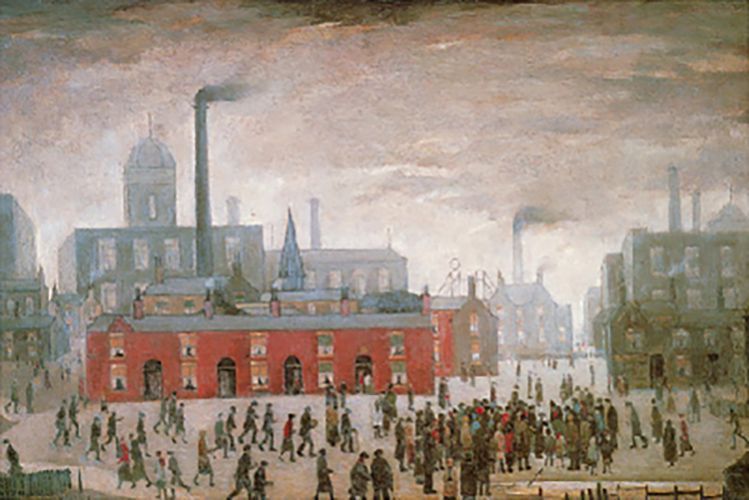
If you look carefully you will see that the people staring in the large group are staring at something on the ground. The title gives a clue - an accident of some kind. But without additional knowledge, the viewer can only appreciate the composition and subject matter of the painting, but not know the narrative.

Many viewers would wonder, however, what is going on within the crowd. A genuine local suicide actually inspired the painting, and Lowry's matchstick figures are all gathered to look at a waterlogged corpse. The remaining people in the painting go about their daily routines, oblivious of the drama unfolding nearby.
In many of Lowry’s paintings people go about their daily lives as, nearby, fist fights, people being evicted from their homes, sufferings of all kinds, are occurring. The pain, the suffering is so much part of their lives it has to be ignored for survival to be achieved. And this is often the point being made by Lowry.
What do you think when you first view this Lowry painting as shown below? Try to avoid taking a glance at the title.
If you look carefully, the figures are all men and, with few exceptions, they are all going the same way. One man in the lower right is not following this crowd. Obviously not interested. What are they doing? A title would probably give a hint.
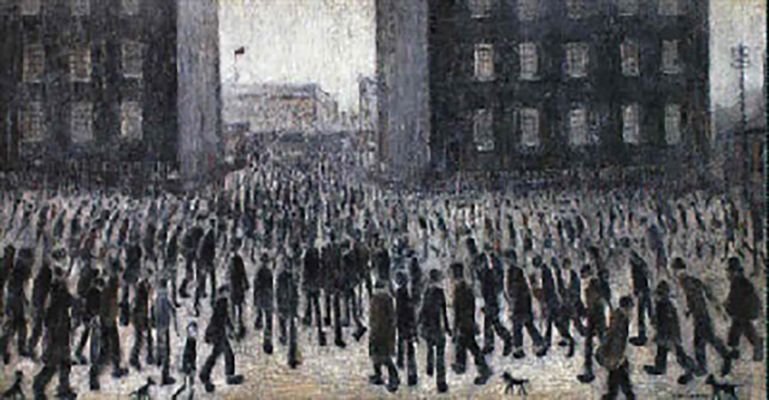
And this is what happens when we view a painting of this style in an exhibition. At first we get an overall impression and perhaps move on. But with an artist such as Lowry and, in fact, all genre artists, you miss the impact, the message, if you don't take a little longer to absorb the image and ponder on its various elements.
I'm going to finish today with one of my own paintings that shows two time periods in the one painting.
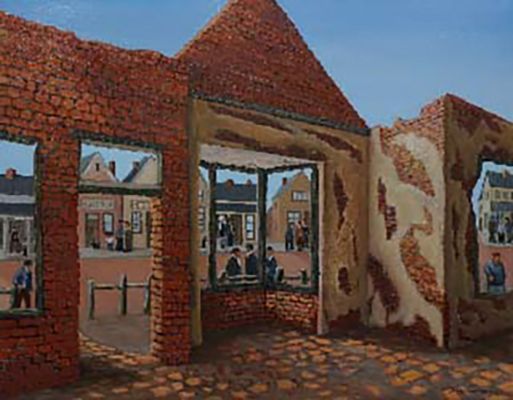
In this painting the ruined wall of an old building is dominant, decaying from years of standing, standing in the present. In the background I have painted the people and their town as it might have existed 100 years or more back in time. The people are going about their daily activities largely oblivious to the fact that they, and the buildings, are decaying. On each side however I have a man staring into the ruins of the building, implying that they are curious about the building in front of them and are aware of a different perspective. Perhaps they can see into the future.
Tomorrow I will show you some hidden perspectives in a painting by Vermeer. Also the works of Diego Rivera and his wife Frida Kahlo will serve as an example that it is unwise to upset an artist, and seeing is not believing.
Credit
- pinterest.com.au
- flickr.com
- en.wikipedia.org
- robertbissell.com
- pinterest.co.uk
- artnet.com
